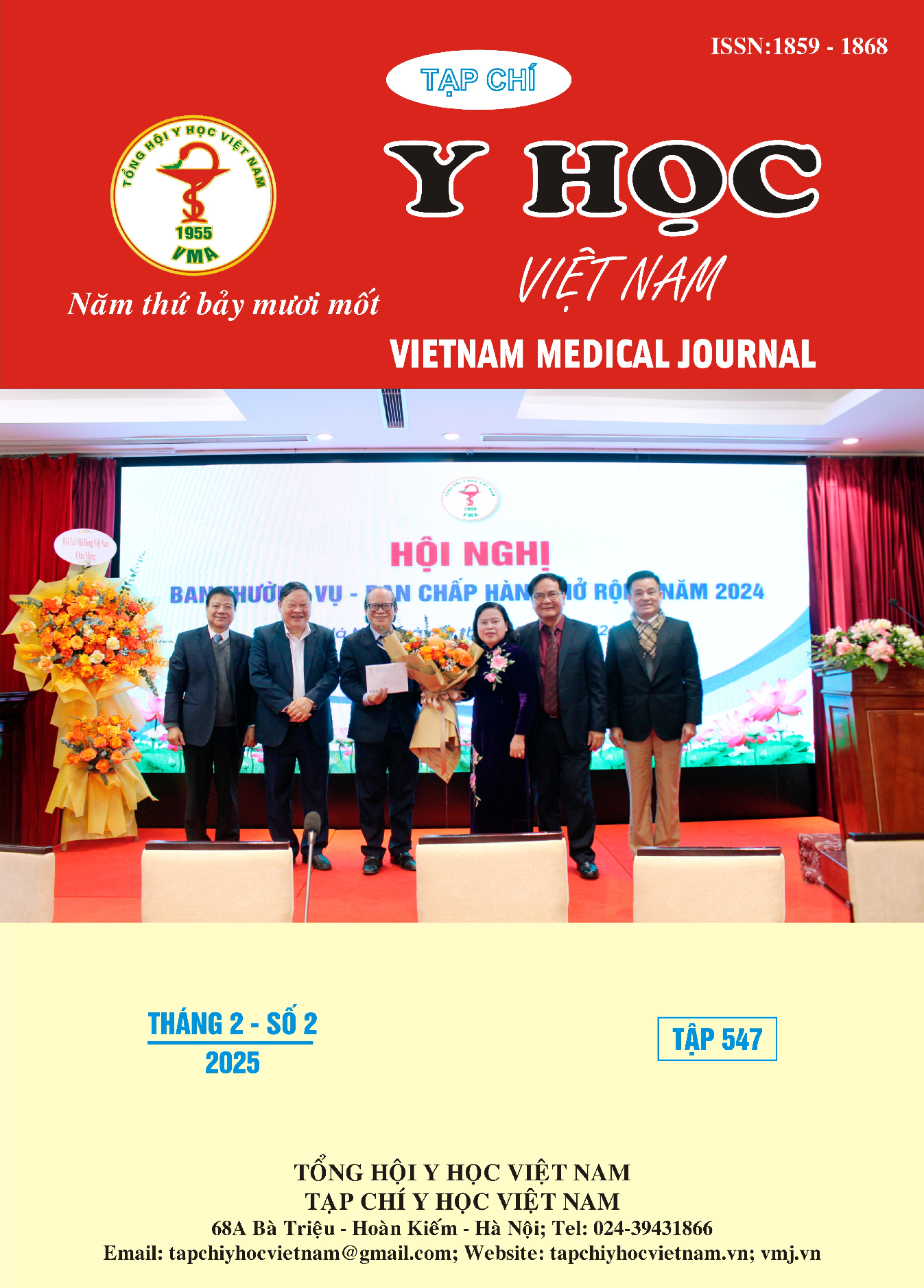ARTHROSCOPIC TREATMENT OF POSTERIOR SHOULDER DISLOCATION WITH ENGAGING REVERSE HILL-SACHS LESION: A RARE CASE REPORT
Main Article Content
Abstract
Introduction: Posterior shoulder dislocation is a rare clinical entity, accounting for 2-4% of all shoulder dislocations. Up to 50% of these injuries are missed in the emergency department. Recurrent posterior dislocations can lead to bone loss of the anterior aspect of the humeral head near the insertion of the subscapularis tendon (reverse Hill-Sachs lesion). This further increases the risk of recurrent posterior shoulder dislocation. Clinical Case: We present a case of recurrent posterior shoulder dislocation. On MRI images revealed a reverse Hill-Sachs lesion of the humeral head and a reverse Bankart lesion (posterior labral tear) without bony deficiency of the posterior glenoid rim. The patient underwent arthroscopic shoulder surgery, which included repair of the posterior labral tear and superior capsular shift of the subscapularis tendon. An intraoperative examination of the shoulder joint (after all repairs were completed) confirmed stability, and there was no further posterior dislocation of the humeral head. The patient recovered well postoperatively with no complications. He was discharged two days after surgery with a sling in place. Discussion: Several surgical techniques have been described to address the high risk of redislocation associated with reverse Hill-Sachs lesions, including subscapularis transfer (McLaughlin procedure), remplissage with bone grafting, rotational osteotomy of the humeral head, and allograft or autograft bone grafting. However, all of these interventions require open surgery. Subscapularis transfer is recommended by most authors for small to medium-sized reverse Hill-Sachs lesions. Arthroscopic superior capsular shift of the subscapularis tendon has been performed by some authors recently. This technique allows for good control and can be performed after repair of the posterior labral tear, avoiding additional open procedures. This approach results in a faster and less invasive surgery. Conclusion: Arthroscopic surgery for recurrent posterior shoulder dislocation, including repair of the posterior labral tear and superior capsular shift of the subscapularis tendon, provides stability and prevents posterior displacement of the shoulder in cases of recurrent posterior shoulder dislocation with huge reverse Hill-Sachs lesions.
Article Details
Keywords
Recurrent posterior shoulder dislocation, arthroscopic shoulder surgery, reverse Hill-Sachs lesion, subscapularis transfer
References
2. Berk, A.N., et al., Clinical and radiographic outcomes of the modified McLaughlin procedure for locked posterior dislocation of the shoulder: a systematic review. JSES Rev Rep Tech, 2024. 4(1): p. 8-14.
3. Di Giacomo, G., E. Itoi, and S.S. Burkhart, Evolving concept of bipolar bone loss and the Hill-Sachs lesion: from "engaging/non-engaging" lesion to "on-track/off-track" lesion. Arthroscopy, 2014. 30(1): p. 90-8.
4. Moroder, P., et al., Risk of Engagement of Bipolar Bone Defects in Posterior Shoulder Instability. Am J Sports Med, 2017. 45(12): p. 2835-2839.
5. Goldenberg, B.T., et al., Rehabilitation Following Posterior Shoulder Stabilization. Int J Sports Phys Ther, 2021. 16(3): p. 930-940.
6. Lanzi, J.T., Jr., et al., Epidemiology of Posterior Glenohumeral Instability in a Young Athletic Population. Am J Sports Med, 2017. 45(14): p. 3315-3321.
7. Bradley, J.P., et al., Arthroscopic capsulolabral reconstruction for posterior instability of the shoulder: a prospective study of 100 shoulders. Am J Sports Med, 2006. 34(7): p. 1061-71.
8. Paul, J., et al., Posterior shoulder dislocation: systematic review and treatment algorithm. Arthroscopy, 2011. 27(11): p. 1562-72.
9. Mc, L.H., Posterior dislocation of the shoulder. J Bone Joint Surg Am, 1952. 24 a(3): p. 584-90.
10. Hughes, M. and C.S. Neer, 2nd, Glenohumeral joint replacement and postoperative rehabilitation. Phys Ther, 1975. 55(8): p. 850-8.


